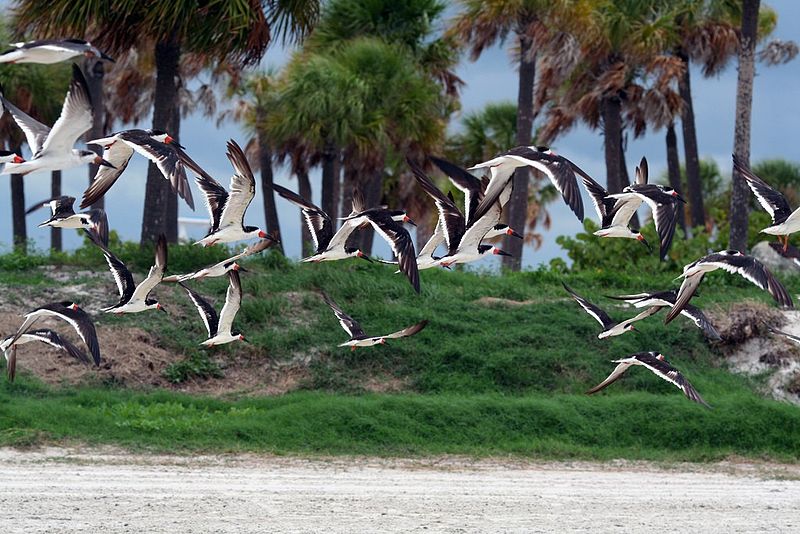|
|
|
|
Dear Florida Climate Center Friends,
We'd like to present you with the April 2011 edition of our newsletter. In this newsletter, you'll find our monthly climate summary, special events that our staff will be at or attended, some new press releases about the status of the El Niņo Southern Oscillation (ENSO) and climate outlook, and an example of a data request made to the office. If you have any questions, please email us at climate@coaps.fsu.edu.
Thanks,
The Staff of the Florida Climate Center
 |  |  |  | David Zierden
State Climatologist | James O'Brien
Professor Emeritus | Melissa Griffin
Asst. State Climatologist | Preston Leftwich
Research Assistant |
|
|
 Spring Climate Outlook for the Southeast Spring Climate Outlook for the Southeast
While La Niņa is expected to last through the spring, its influence on climate patterns of the Southeast weakens considerably as we progress into April, May, and June. With La Niņa less of an influence on the weather patterns of the Southeast, we can anticipate normal spring and early summer climate patterns. Normal does not necessarily imply that seasonal temperature and/or precipitation will be near the long-term average, rather that there is little inclination towards wetter, drier, warmer, or colder due to events in the Pacific Ocean. Near normal rainfall and temperature is the most likely, but we can also anticipate the normal variability of weather and climate to be a factor in the next several months.
To view the entire outlook, prepared by the Southeast Climate Consortium,
click here.
|
|
 Climate Phase Forecast for the Southeast Climate Phase Forecast for the Southeast
In the last month, sea surface temperatures have warmed considerably and La Niņa is weakening quickly, as these events typically do in the spring of the year. Even though the ocean temperatures are returning to normal or "neutral" conditions, lagging impacts on the atmosphere and general circulation can persist into the early summer. We are anticipating that La Niņa will continue to have some bearing on the climate patterns of the Southeast through spring and into the month of June.
To view the full forecast, click here.
|
|
 In the Press In the Press
4/1/11: Storms bring mix of damage and benefits (Daytona Beach News-Journal; with David Zierden) |
|
 State Climatologist Talks at Fellows Forum State Climatologist Talks at Fellows Forum
State Climatologist David Zierden participated in a panel discussion on climate change and presented information on climate variations and trends in Florida at Florida State University on March 18. The forum was sponsored by the FSU Graduate School and addressed a group of the Graduate School Fellows, students receiving graduate fellowships from Florida State University. The distinguished panel also included Dr. Mark Bourassa, professor of meteorology at the Center for Ocean-Atmospheric prediction studies, and Dr. Eric Barron, FSU president and noted climatologist. After a brief presentation from all of the panelists, a lively discussion followed with students asking questions ranging from public perceptions of climate change to broader energy and societal issues. |
|
 Assistant State Climatologist Gives Talk to Local AMS Chapter Assistant State Climatologist Gives Talk to Local AMS Chapter
Assistant State Climatologist Melissa Griffin appeared at the monthly meeting of the North Florida Chapter of the American Meteorological Society on March 29 and gave a talk about some of the historic severe weather events that had taken place in Florida from 1899 to 2011. Events prior to 1970 included the Tampa Tornado Family of 1966, the Labor Day Hurricane of 1935, the Lake Okeechobee Hurricane of 1928 and The Great Blizzard of 1899. Other interesting events over the last 100 years were briefly discussed. |
|
 Upcoming Events Upcoming Events
April 6, 2011:
FSU Earth Day Celebration - Eco-Arts on the Green in Tallahassee, FL
April 12, 2011:
FSU Day at the Capitol in Tallahassee, FL
April 13-14, 2011:
National Drought Monitor Forum in Fairfax, VA
April 16, 2011:
FSU Coastal & Marine Laboratory Open House in St. Teresa, FL
May 24-27, 2011:
Climate Information for Managing Risks Symposium in Orlando, FL
|
|
 Example Data Request Example Data Request
Each month, we highlight here recent examples of some of the many public services provided by the Florida Climate Center:
The office was contacted by an administrator from the Hobe Sound Nature Center in Hobe Sound, FL last month, whom was looking for weather observations from the Clewiston area. A volunteer biologist for the center had received reports of a bird die-off in that particular area and one of their researchers wanted to have information about the abnormally cold weather and if it could have been a factor into why the birds had died.  |
|
 About Us About Us
The Florida Climate Center is part of a three-tiered system of national, regional, and state climate offices, including NOAA's National Climatic Data Center and the Southeast Regional Climate Center. The Florida State Climatologist and other staff at the Florida Climate Center provide the following information and services to the people of Florida:
· Climate Data:
Historical weather observations for weather stations throughout the state of Florida. We are able to provide data for most stations from 1948-present.
· Climate Information:
Long-term historical averages for various stations, climate divisions, and the entire state.
· Extreme Event Records:
Information and analyses on extreme events such as freezes, droughts, floods and hurricanes.
· Special Analysis:
With their vast knowledge of El Niņo, La Niņa and climate variability, the State Climatologist and staff can offer expert insight into Florida's climate trends.
· Outreach:
Activities, presentations, and workshops that inform and educate the people of Florida about current and emerging climate issues. We also coordinate volunteers for the Community Collaborative Rain, Hail & Snow Network (CoCoRaHS).
More About Us |
|
|